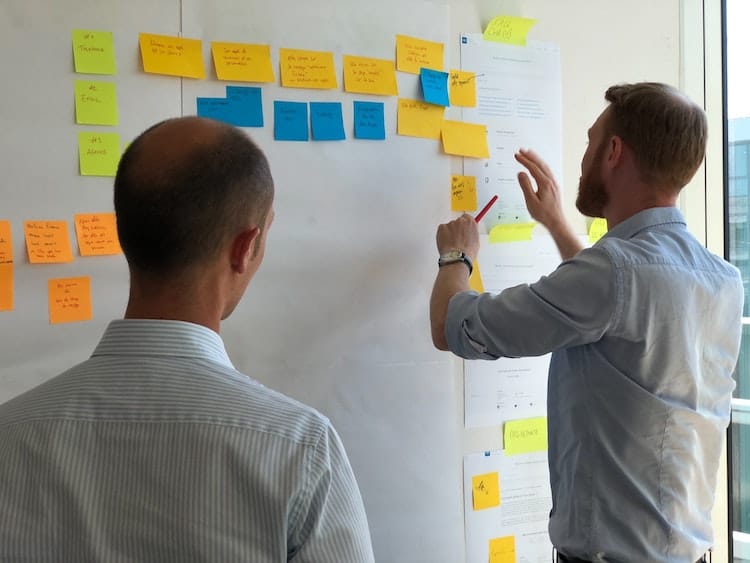How Are You Setting Up Your Digital Product Roadmap?

Why Sidekick Interactive Is Great at Creating Roadmaps
Sidekick Interactive has an advantage over most service business because we own and develop our own product alongside our client’s. For the past 7 years, we have been building a software product (native iOS and Android apps and Azure Cloud backend) sold to municipal governments to help them manage snow removal communication and notifications. Having an internal product allows us to create a fully integrated digital product roadmap from the ground up for our product, in which the stakes are our own money and success. This gives us great experience when talking with potential clients. For example, we have recently expanded our snow removal product with new features within the mobile apps and by creating new interfaces for users to interact with our product, which are common roadmap paths for most digital products.
Mind Mapping
Drawing out a feature map for the product can be a great way to visualise the whole roadmap. It allows us to enjoy the big picture of what we want our product to achieve and how we will get there. Splitting up features into different categories, such as Mobile, Web and Services helps us assess each feature’s impact on other areas or other products in this ecosystem.
Deciding on What Features to Do Next
The way we decide on what features to develop next rely on our product’s objectives, on our empathy and understanding of user needs, and on the importance/cost ratio.
The importance/cost ratio is used to compare all potential features on an even level, by figure out how important they are to users and to the product, then dividing by an estimated cost to implement. Different organizations have a limitless supply of money and chose to focus on time to implementation (which ends up being closely correlated with cost most times).
INFO-Snow Example – Expanding to Web
We had mobile apps, but when discussing with our clients and their users, we found that an important factor for them was accessibility. It was important that the dissemination of public information not be discriminating against those without mobile devices.
In this vein, we decided to duplicate our service to a web app. This comes with it’s challenges, because of many reasons and differences, for example, screen size and push-notifications: Mobile apps can send push notifications to alert users about updates, but web apps cannot. (They can, but in a very limited fashion, with very limited results). To counter this, we had to implement a sign-up feature and support notifications sent to both email and SMS.
Twilio’s technology was essential for the success of Sidekick Interactive’s snow removal products. The company leveraged Twilio’s cloud-based infrastructure to create a unified platform and send notifications via both SMS and email. This allowed users to receive vital updates regardless of their device type—mobile or web—and enabled Sidekick Interactive to further expand its features and user base.
Choosing a Web-App Above Other Features and Ideas
The web interface was not the only proposed feature enhancement we had pitched or been proposed by our client. We had to weigh the difficulty of implementation to the user benefit in each case to determine which work would have the largest impact for our client.
In this case, the web interface was aligned with our client’s mission of accessibility, and gave the product a quick win in that it allowed all non-mobile users to access the features in the app. This was met with resounding success as almost as many users opted to sign up for text messages alerts as for push notifications.
There was also a limited budget, which meant we would not be able to do both. This is why careful consideration and weighing proportional importance was necessary. In the end, web won by a landslide, as it gave our client’s users better access than all other proposed features combined and resulted in a higher return-on-investment for our client.
Conclusion
Sidekick Interactive leveraged the power of mobile, web and services technology to provide a more comprehensive product roadmap. By understanding our client’s requirements and user needs, we were able to implement essential features that improved user experience and increased customer satisfaction. We also integrated Twilio’s cloud-based infrastructure to ensure reliable notifications with feature parity regardless of device type. With these updates, Sidekick Interactive was able to expand its snow removal product and provide a better service for its users.
These are just some of the ways that we feel have helped us on our journey to success in developing successful digital products. As always, experimentation is key and we’re looking forward to continuing exploration of the possibilities and opportunities that this space has to offer.


